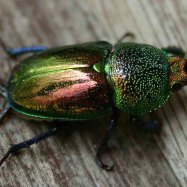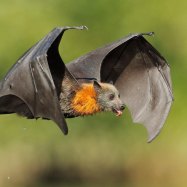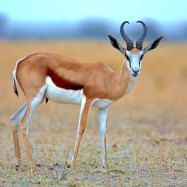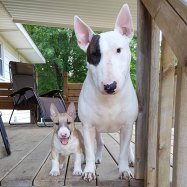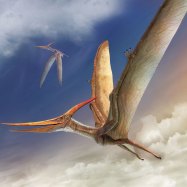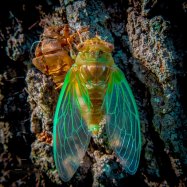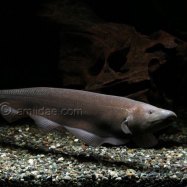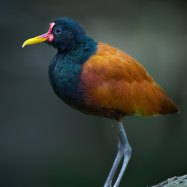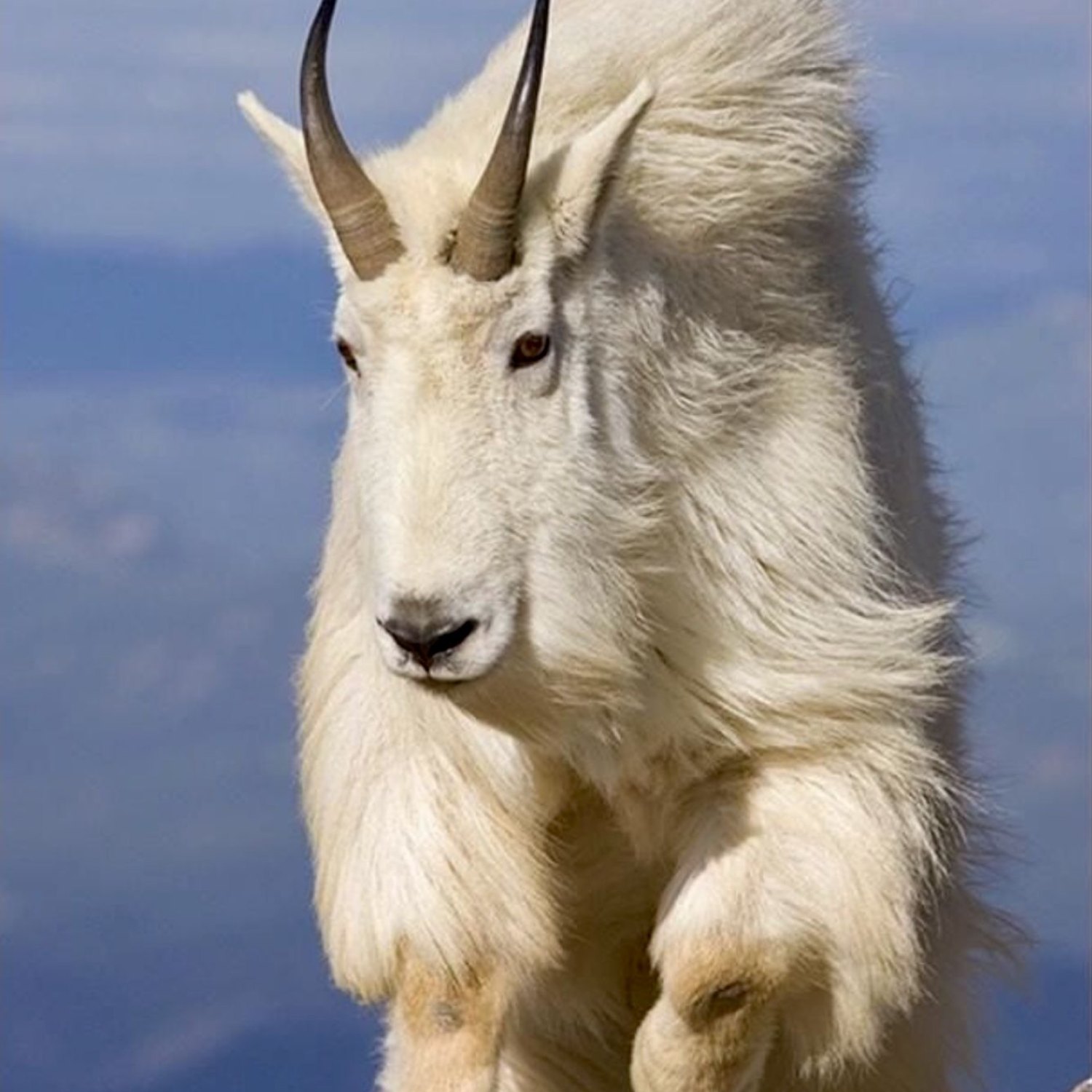
Goat
Varies depending on the breed, but typically between 1.2 to 1.8 meters (3.9 to 5.9 ft).
Goats are fascinating animals that can be found all over the world, except Antarctica. They come in a variety of breeds with a length of 1.2 to 1.8 meters and a compact, muscular body. Bovidae family member, these animals make great companions and are known for their curious and playful personalities. #Goats #AnimalFacts
Animal Details Summary:
Common Name: Goat
Kingdom: Animalia
Habitat: Varies depending on the breed, but generally open woodlands, grasslands, and shrublands
The Versatile and Adaptable Goat: A Closer Look at the Capra aegagrus hircus
Goats are one of the most versatile and adaptable animals in the world. They have been a domesticated species for thousands of years and play an important role in human civilization. From their unique physical characteristics to their diverse habitats and feeding habits, goats are truly fascinating creatures.Scientifically known as Capra aegagrus hircus, goats are a member of the animal kingdom, phylum Chordata, and class Mammalia Goat. They belong to the order Artiodactyla, which includes animals with even-toed hooves like deer, sheep, and cattle. Goats fall under the family Bovidae, which includes other ruminants such as cows and antelopes.
Habitat and Distribution
One of the many remarkable things about goats is their ability to thrive in various habitats. Depending on the breed, goats can be found in open woodlands, grasslands, shrublands, and even mountainous areas. They are truly adaptable and can adapt to a wide range of climatic and environmental conditions.In the wild, goats are typically found in the Middle East, Asia, and Europe. However, through human intervention, they have been introduced to various parts of the world and can now be found on all continents, except Antarctica. This has made them one of the most widespread domesticated animals and an essential part of many cultures and economies.
Feeding Habits
As herbivores, goats have a diet consisting mainly of plants Galapagos Tortoise. They are considered browsers, meaning they prefer to eat leaves, twigs, and shrubs from trees and shrubs rather than grass. However, goats can also graze on grass if necessary.Their ability to eat a wide range of plant material makes them ideal for living in diverse habitats and climates. They are also able to digest a variety of plants, including tough and coarse vegetation, making them incredibly resourceful animals.
The Fascinating History of Domestication
Goats have been domesticated for thousands of years, with the earliest evidence dating back to the Neolithic period, around 10,000 years ago in the Middle East. They were one of the first animals to be domesticated, along with sheep, cattle, and pigs, and have since then played an essential role in human civilization.Initially, goats were raised for their milk, meat, and hides. However, as humans started to migrate and expand their territories, they also brought goats with them, mainly for their ability to adapt to different environments. Today, goats are not only raised for their dairy and meat products, but they are also used for their hair and as working animals.
Physical Characteristics
Goats are known for their distinct appearance, with their upright, curly horns and beards. They have a compact and muscular body with a relatively short neck, a sturdy frame, and a short tail. The average length of a goat varies depending on the breed, but they can range from 1.2 to 1.8 meters (3.9 to 5.9 ft).Their coat color can also vary greatly, depending on the breed. It can be brown, white, or black, and sometimes a mixture of these colors. Some breeds also have unique patterns or markings on their coats, making them even more distinct.
One of the most striking features of goats is their horns. Both male and female goats have them, although males typically have larger and more curved horns. These horns serve various purposes, such as fighting for dominance, defending against predators, and even attracting mates.
The Role of Goats in the Environment
Aside from their roles in agriculture and human culture, goats also play a vital role in the environment. As grazers and browsers, they help maintain the balance of plant life in their habitats. Their droppings also contribute to nutrient cycling and soil fertilization, promoting plant growth.In some areas, goats are also used for vegetation management. Using their unique ability to eat almost any plant, they can help control invasive plant species or reduce fire hazards by grazing on dry vegetation.
Intelligence and Social Behavior
Goats are incredibly intelligent animals, with a strong ability to adapt and learn. They are highly social animals and form strong bonds within their herds. They also have a hierarchy within their groups, with dominant individuals asserting their authority.In addition to communicating with each other through vocalizations, goats also use their body language and scents to communicate. For example, they will use their horns, headbutting, or even kicking to show dominance or aggression, while the scent from their urine and feces can provide information about their reproductive state.
Challenges for Goat Populations
Despite their adaptability and resilience, goats face several challenges in their populations. One of the most significant threats is overgrazing, which can lead to soil erosion and degradation. This is especially problematic in areas where goats have been overexploited for their products, such as milk and meat.Another challenge is disease outbreaks, which can quickly spread within goat herds. Some diseases, such as brucellosis and tuberculosis, can also be transmitted to humans, making it essential to carefully manage goat populations and monitor for any potential health risks.
Goats in Literature and Mythology
Throughout history, goats have been depicted in various works of art and literature and have become symbols of different concepts and ideas. In Greek mythology, goats are associated with Dionysus, the god of wine, fertility, and revelry. The constellation Capella, which appears as a goat, is also associated with the god.In pop culture, goats have been portrayed in various films, TV shows, and books, often as comedic relief or as symbols of stubbornness and mischief. However, they also hold a place in many cultural traditions, with some cultures celebrating them in festivals and rituals.
The Extensive Benefits of Goats
In addition to their role in the environment and cultural significance, goats also provide many valuable products and services. These benefits make them an essential part of the agricultural industry and contribute significantly to the economy.Milk and Dairy Products
One of the main products from goats is their milk, which is used to make various dairy products such as cheese, butter, yogurt, and even ice cream. Goat milk is known for its high nutritional value, containing more protein, calcium, and potassium than cow's milk. It is also easier to digest, making it an ideal alternative for those who are lactose intolerant.Meat and Other Edible Products
Goat meat, also known as chevon or capretto, is a popular protein source in many cultures. It is leaner and lower in cholesterol compared to beef and pork, making it a healthier alternative. In some cultures, organs such as the liver, heart, and kidneys are also eaten, and in some places, blood is collected and used to make traditional dishes.In addition to their meat, goats also provide other edible products, such as their hides, which can be used to make leather, and their hair, which can be used to make cashmere and mohair clothing.
Working Animals
In some parts of the world, goats are used as working animals, helping with tasks such as plowing, packing, and even weed control. They are also used for their strength and agility in sporting events such as goat roping and goat yoga.The Increasing Demands for Goat Products
With the growing demand for sustainable and organic products, the popularity of goat products has increased in recent years. Goat herds are now being raised on larger scales, and more research is being done to improve their genetics and productivity. This has also led to the development of new breeds, such as the Nigerian Dwarf goat and the Boer goat, which are specifically bred for their milk and meat production, respectively.The Balance of Sustainable Farming
The increased demand for goat products has also led to concerns about the sustainability and welfare of goat herds. It is essential to practice responsible farming methods and ensure the well-being of the animals. This includes providing adequate space for grazing, access to clean water, and proper nutrition. Responsible farming practices not only benefit the goats but also contribute to the sustainability of the land and the environment.In Conclusion
Goats may seem like ordinary animals, but upon closer inspection, they are truly extraordinary creatures with incredible adaptability, intelligence, and versatility. From their role in ancient civilizations to their significant contributions to modern society, goats have stood the test of time and continue to be an essential part of our world. With careful management and responsible farming practices, we can ensure that goats will continue to thrive and bring balance to our environments.

Goat
Animal Details Goat - Scientific Name: Capra aegagrus hircus
- Category: Animals G
- Scientific Name: Capra aegagrus hircus
- Common Name: Goat
- Kingdom: Animalia
- Phylum: Chordata
- Class: Mammalia
- Order: Artiodactyla
- Family: Bovidae
- Habitat: Varies depending on the breed, but generally open woodlands, grasslands, and shrublands
- Feeding Method: Herbivore
- Geographical Distribution: Goats are found worldwide, especially in mountainous areas.
- Country of Origin: Goats were domesticated in the middle east about 10,000 years ago.
- Location: Varies depending on the breed, but they are found on all continents except Antarctica.
- Animal Coloration: Varies depending on the breed, but commonly brown, white, or black.
- Body Shape: Compact and muscular, with a relatively short neck, a sturdy frame, and a short tail.
- Length: Varies depending on the breed, but typically between 1.2 to 1.8 meters (3.9 to 5.9 ft).
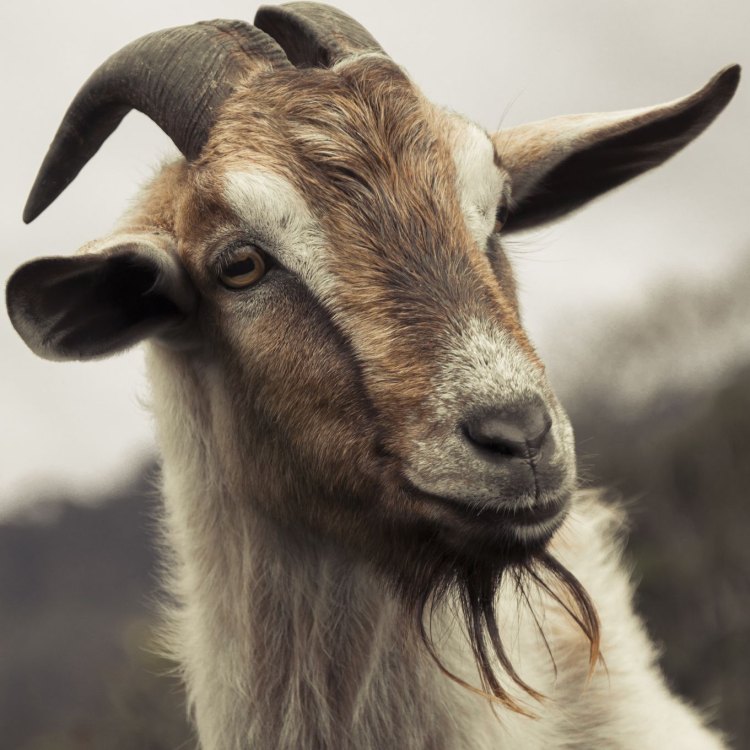
Goat
- Adult Size: Varies depending on the breed, but typically between 60 to 140 kilograms (130 to 310 lb).
- Average Lifespan: Varies depending on the breed, but generally between 15 to 18 years in captivity.
- Reproduction: Sexual
- Reproductive Behavior: Breeding season varies depending on the breed, but generally occurs in the fall.
- Sound or Call: Goats have a variety of vocalizations including bleats, grunts, and snorts.
- Migration Pattern: Non-migratory
- Social Groups: Goats are social animals and live in herds.
- Behavior: Curious, agile, and resourceful.
- Threats: Predation, habitat loss, and disease.
- Conservation Status: Domesticated
- Impact on Ecosystem: Goats can have a significant impact on ecosystems if overgrazing occurs.
- Human Use: Goats are used for their milk, meat, and fiber.
- Distinctive Features: Beard, horns, and cloven hooves.
- Interesting Facts: 1. Goats were one of the first animals to be domesticated by humans. 2. Goats have rectangular pupils that give them a wide field of vision. 3. Goats are excellent climbers and can easily scale steep terrain. 4. Goats are known for their curious and mischievous behavior. 5. Goats have a unique scent that can be detected by other goats from long distances.
- Predator: Predators of goats include wolves, coyotes, and large cats.
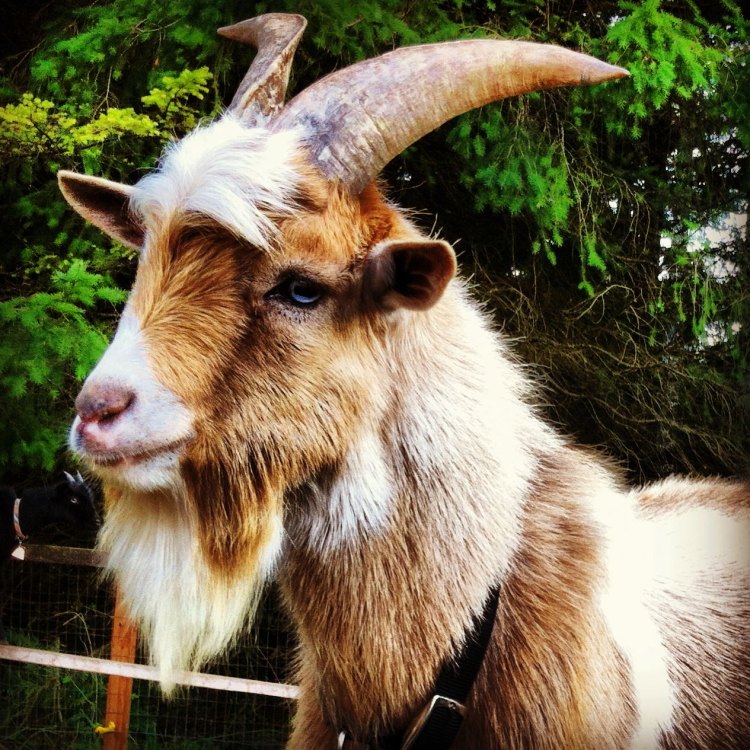
Capra aegagrus hircus
The Fascinating World of Goats: From Domestication to Ecosystem Impact
When thinking about farm animals, goats may not be the first animal that comes to mind. However, these fascinating creatures have been part of human society for thousands of years and have played a significant role in our history, culture, and even ecosystems. From their unique features to their impact on the environment, goats are truly remarkable animals that deserve to be appreciated and understood. In this article, we will delve into the world of goats, from their adult size to their predator threats, and everything in between PeaceOfAnimals.Com.Adult Size: Curious Creatures in Different Shapes and Sizes
The term "goat" may conjure up images of a medium-sized animal with horns, but the truth is, there is a wide variety of goat breeds, each with its own distinct features and sizes. While the average adult size ranges from 60 to 140 kilograms (130 to 310 lb), some breeds can weigh as little as 25 kilograms (55 lb), while others can reach up to 200 kilograms (440 lb). This diversity in size can be attributed to the different uses and purposes of goats, such as milk production, meat, and fiber.
One of the largest goat breeds is the Anglo-Nubian, originating from England, and can weigh up to 140 kilograms (310 lb) or more. On the other end of the spectrum, we have the Nigerian Dwarf Goat, which is one of the smallest breeds and can weigh as little as 25 kilograms (55 lb). Despite their size, all goats share certain characteristics, such as their distinctive features, reproductive behavior, and social groups.
Reproductive Behavior: The Season of Love for Goats
Like most mammals, goats reproduce through sexual reproduction, with males and females engaging in breeding behavior during a specific season. The breeding season for goats varies depending on the breed, but generally occurs in the fall. During this time, males become more vocal and assertive, competing for the attention of females Gargoyle Gecko. This behavior is known as rutting and can involve loud vocalizations, scent marking, and even fighting amongst males.
Once a male has successfully caught the attention of a female, they engage in mating behavior, and if successful, the female will give birth to one or two kids after a gestation period of five months. Goats are known for their high reproductive rate, with females reaching sexual maturity as early as four to five months old, and can have up to three litters per year. This rapid breeding rate has made goats a valuable source of meat, milk, and fiber for human consumption.
Behavior: The Curious, Agile, and Resourceful Goats
When it comes to behavior, goats are unlike any other farm animal. They are known for their curious and mischievous nature and are often seen climbing, jumping, and exploring their surroundings. This is due to their naturally agile and resourceful nature, making them excellent at adapting to different environments. This behavior is not only entertaining to watch, but it also serves as a way for goats to keep themselves mentally and physically stimulated.
Additionally, goats are social animals and live in herds, usually consisting of females, their young, and a dominant male. In these herds, goats form strong bonds and have unique social hierarchies, with the most dominant goat leading the herd. This social structure is essential for their survival, as it allows for better protection against predators, finding food and water, and overall group cohesion.
Distinctive Features: More Than Just a Beard and Horns
One of the most distinctive features of goats is their beard, which is present in most breeds and can be found on both males and females. The beard is made of hair and is longer and thicker on males, often used as a visual indicator of dominance. Another notable feature of goats is their horns, which come in a variety of shapes, sizes, and angles. Horns are made of keratin, the same material found in human hair and nails, and are used for defense, dominance, and even balance when climbing.
Aside from their beard and horns, goats also have cloven hooves, meaning their hooves are split into two toes. This anatomical feature allows them to navigate various terrains with ease, providing them with the necessary grip and balance. Interestingly, goats have rectangular pupils that give them a wide field of vision, making them excellent at detecting predators from afar.
Threats: A Perfect Meal for Predators
As social and agile as goats may be, they are not without their threats in the wild. Predators such as wolves, coyotes, and large cats are known to prey upon goats, making them a sought-after meal. Due to their herbivorous diet, goats do not pose a threat to other animals, but their vulnerability makes them an easy target for natural predators. This is why domesticated goats are often kept in secure enclosures for their safety.
Aside from predators, goats also face threats from habitat loss and diseases. As we continue to expand our human population and urbanize areas, we encroach on the natural habitats of goats and other wildlife. This leads to reduced grazing areas and competition for food, leaving goats susceptible to starvation. Additionally, diseases can spread quickly amongst goats living in close quarters, causing health issues and even death.
Impact on Ecosystem: Balancing Act for Goats
As domesticated animals, goats play a significant role in human society, providing us with milk, meat, and fiber. However, when it comes to their impact on ecosystems, it is a delicate balancing act. Goats are known for their efficient grazing abilities, and if left unchecked, can easily overgraze an area, leading to soil erosion, destruction of plant life, and even depletion of water sources.
In some cases, overgrazing can have devastating effects on the ecosystem, leading to loss of biodiversity and habitat destruction for other animal species. It is crucial to manage and monitor goat populations to prevent overgrazing and maintain a balance within the ecosystem.
Human Use: More Than Just Farm Animals
Goats have been domesticated by humans for thousands of years, making them one of the first animals to be tamed and used for various purposes. The most common uses for goats are their milk, meat, and fiber. Goat milk is known for its high nutritional value and is commonly used for drinking, as well as making cheese, butter, and other dairy products. Goat meat, also known as chevon, is widely consumed in many countries and is a lean and healthy protein source. Lastly, goat fiber or mohair is used for textiles, clothing, and even carpets.
Besides their practical uses, goats also hold cultural significance in various societies. They are featured in many folktales, festivals, and even religious ceremonies. In some cultures, goats represent vitality, strength, and virility, and are often seen as symbols of prosperity and abundance.
Interesting Facts: From Rectangular Pupils to Scent Marking
Goats are full of surprises, and here are some interesting facts that you may not know about them:
1. Goats were one of the first animals to be domesticated by humans, around 10,000 years ago. Their ease of taming and multiple uses made them valuable assets to ancient societies.
2. As mentioned earlier, goats have rectangular pupils that give them a wide field of vision. This provides them with a 320-degree panoramic view and allows them to detect potential predators from any angle.
3. Goats are excellent climbers and have been known to scale steep terrain with ease. This ability is due to their split hooves, which provide them with balance and grip.
4. Goats are known for their curious and mischievous behavior. They have been observed to show preference for certain colors, objects, and even their own image in a mirror.
5. Goats have a unique scent that can be detected by other goats from long distances. This is how they communicate with each other and establish dominance.
In Conclusion: A Newfound Appreciation for Goats
In this article, we have explored the fascinating world of goats, from their adult size to their behavior, reproductive patterns, and even their impact on the environment. Despite being domesticated animals, goats have retained their natural instincts, making them unique and highly adaptable creatures. From their distinctive features, such as their beard and horns, to their important role in human society, goats continue to fascinate and captivate us. As we continue to coexist with goats, let us remember to appreciate and respect these remarkable creatures, as they are more than just farm animals, but a part of our shared history and culture.
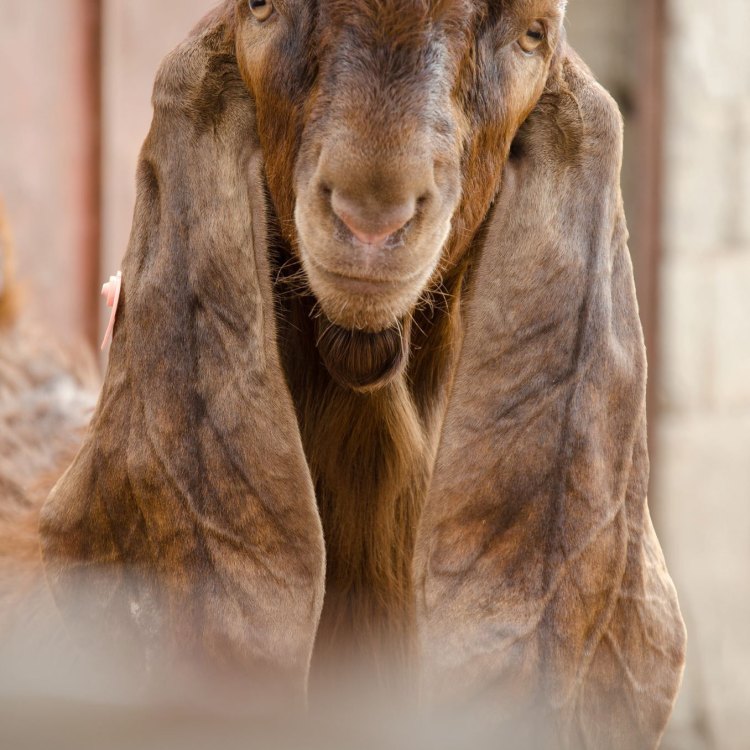
The Versatile and Adaptable Goat: A Closer Look at the Capra aegagrus hircus
Disclaimer: The content provided is for informational purposes only. We cannot guarantee the accuracy of the information on this page 100%. All information provided here may change without prior notice.

